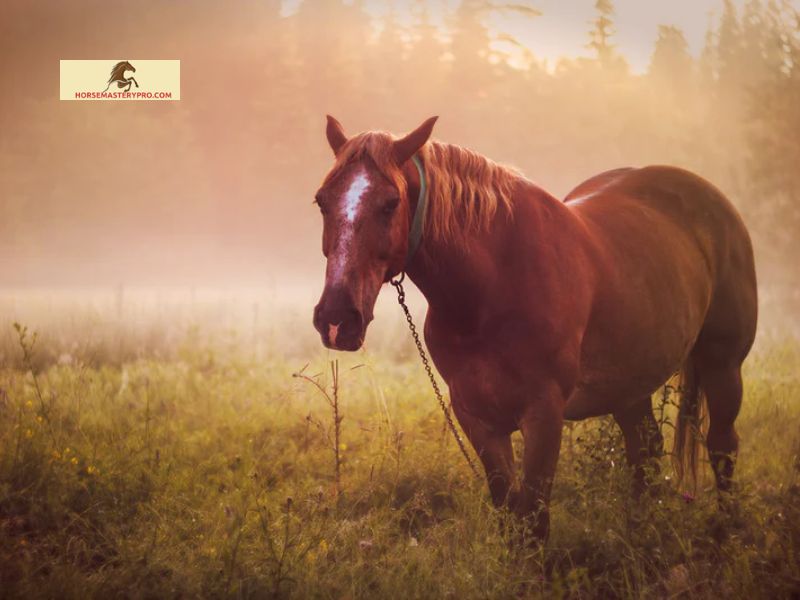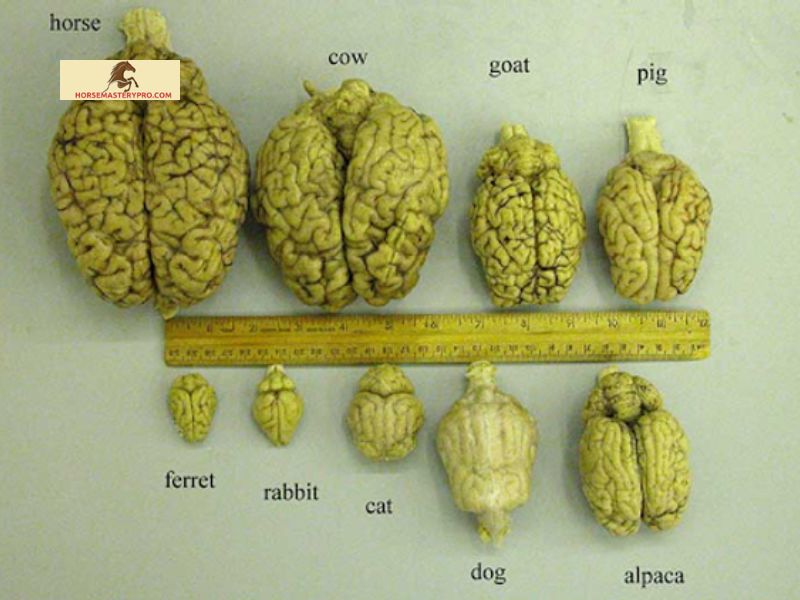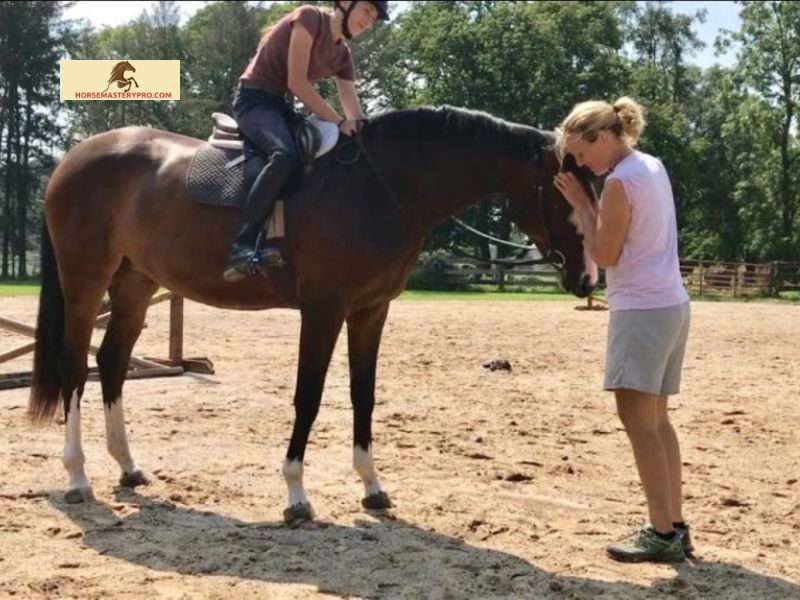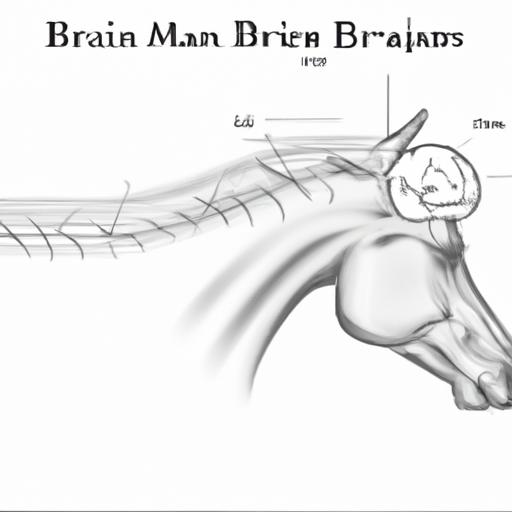Uncover the fascinating link between brain size and horse health. Explore the impact on well-being, performance, and neurological disorders. Discover how big a horse’s brain truly is!
How Big is a Horse’s Brain: Have you ever wondered about the incredible power housed within a horse’s skull? The sheer size and complexity of their brains hold so much potential, shaping their behavior, intelligence, and overall well-being. In this captivating journey, we will delve into the depths of a horse’s brain, unraveling its mysteries and shedding light on why understanding its size is crucial to every horse enthusiast. So, saddle up and let’s embark on this enlightening adventure together!
Importance of Understanding a Horse’s Brain Size

When it comes to horses, knowledge truly is power. Understanding the size of a horse’s brain opens the gateway to comprehending their cognitive abilities, emotions, and social behavior. As equestrians and caretakers, it is essential to grasp the mechanisms behind their actions. By grasping the significance of a horse’s brain size, we can enhance our training techniques, cultivate stronger bonds, and ensure their well-being.
Brief Overview of the Article’s Content
In this comprehensive article, we will explore various aspects related to a horse’s brain size. We will start by examining the anatomy of a horse’s brain, comparing its size to other animals, and investigating the factors that influence this crucial organ. Next, we will dive into the functions of the horse brain, unraveling the intelligence, emotions, and social behavior it governs. Furthermore, we will delve into the factors affecting brain size, including genetics, breed, and environmental influences. Lastly, we will shed light on the relationship between brain size and horse health, emphasizing the implications for their overall well-being and performance.
Get ready to unlock the secrets hidden within a horse’s brain. Join me on this captivating journey of discovery as we unravel the wonders of their magnificent minds. Together, we will gain insights that will revolutionize the way you perceive and interact with these noble creatures.
Stay tuned for the upcoming sections where we will venture deeper into the intricate workings of a horse’s brain. Meanwhile, let your curiosity gallop wild and free!
Horse Anatomy: Brain Size and Structure
A. Overview of a Horse’s Brain Structure
The intricate design of a horse’s brain is truly awe-inspiring. Nestled within their cranium, this organ orchestrates their every thought, action, and emotion. The horse brain consists of various regions, each with its own specific functions. The cerebrum, responsible for cognition and learning, enables horses to process information, make decisions, and solve problems. The cerebellum, known as the “little brain,” coordinates movement, balance, and muscle control. Additionally, the brainstem regulates essential bodily functions, such as breathing and heart rate. Understanding the structure of a horse’s brain provides valuable insights into their capabilities and behavior.
B. Comparison of Horse Brain Size to Other Animals
Curiosity often leads us to wonder how a horse’s brain size measures up against other creatures. While not the largest in the animal kingdom, horses possess a remarkable brain size relative to their body mass. On average, a horse’s brain weighs approximately 22 ounces (600 grams). To put this into perspective, their brain size is smaller than that of humans, weighing about one-tenth of our brain mass. However, horses’ brain-to-body ratio is quite significant, emphasizing the importance of their cognitive abilities and sensory processing.
C. Factors Influencing a Horse’s Brain Size
The size of a horse’s brain is not solely determined by genetics but is also influenced by various external factors. Genetic factors play a crucial role, as different breeds may exhibit slight variations in brain size. Additionally, individual variation within a breed can affect brain size to some extent. However, environmental influences also shape brain development. Factors such as nutrition, exercise, and mental stimulation can impact the growth and overall size of a horse’s brain. Thus, providing a stimulating and enriching environment is vital for optimizing their brain’s potential.
In the upcoming sections, we will delve deeper into the intriguing functions of a horse’s brain and how its size influences their behavior and well-being. Stay tuned for an enlightening exploration of these magnificent creatures.
Understanding the Horse Brain’s Functions

A. Cognitive Abilities and Intelligence of Horses
Have you ever marveled at the intelligence displayed by horses? Their ability to learn, problem-solve, and adapt is nothing short of astounding. The horse brain plays a pivotal role in these cognitive abilities, allowing them to process information, make decisions, and retain knowledge.
Researchers have found that horses possess remarkable memory capabilities, enabling them to remember people, places, and past experiences. Their ability to learn new tasks and respond to cues showcases their intelligence and willingness to cooperate. Whether it’s navigating complex obstacles or performing intricate dressage movements, horses exhibit a level of cognitive prowess that continues to captivate us.
B. Emotions and Social Behavior Influenced by the Horse Brain
Just like us, horses experience a wide range of emotions. From joy and curiosity to fear and anxiety, their emotional spectrum shapes their behavior and interactions with both humans and fellow equines. The horse brain acts as the conductor of this emotional symphony, orchestrating their responses to various stimul
Understanding their emotional landscape is crucial for establishing a strong bond with these majestic creatures. By recognizing signs of stress, contentment, or affection, we can better gauge their well-being and tailor our interactions accordingly. The horse brain’s influence on social behavior cannot be underestimated either. It governs their ability to form social hierarchies, communicate using body language, and establish deep connections with their herd members.
C. Connection Between Brain Size and Horse Behavior
You might be wondering: does the size of a horse’s brain impact its behavior? Research suggests that brain size does play a role in shaping certain behavioral traits. While it’s not the sole determining factor, a larger brain can be associated with enhanced learning abilities, problem-solving skills, and adaptability.
However, it’s important to remember that brain size alone does not dictate a horse’s behavior. Factors such as genetics, environment, and training also significantly contribute to their actions. Each horse is unique, and their individual personality and experiences play a significant role in shaping their behavior.
In the upcoming sections, we will explore the factors influencing brain size in horses and delve deeper into the intricate relationship between brain size and behavioral traits. So, let’s continue our journey into the fascinating world of the horse brain, where intellect and emotions intertwine to create these magnificent creatures we admire.
Stay tuned for further insights on how the horse brain’s functions shape their behavior and interactions. Prepare to be amazed by the intricate workings of their minds!
Factors Affecting Horse Brain Size

Understanding the factors influencing a horse’s brain size is key to comprehending their neurological capabilities and behavior. Let’s explore the various elements that contribute to this fascinating aspect of equine physiology.
A. Genetic Factors Influencing Brain Size in Horses
Horse brain size is significantly influenced by genetic factors. Just like humans, horses inherit their genetic makeup from their parents, including traits related to brain development. Research has shown that certain genes play a role in determining brain size, influencing the overall cognitive abilities and intelligence of the animal. Understanding the genetic foundation of a horse’s brain size can provide valuable insights into their potential and help breeders make informed decisions to produce horses with desired traits.
B. Impact of Breed and Individual Variation on Brain Size
Apart from genetic factors, the breed and individual variation also contribute to variations in horse brain size. Different horse breeds can display distinct brain sizes, reflecting their specialized characteristics and abilities. For instance, breeds renowned for their intelligence and trainability may possess larger brains compared to others. Additionally, within a breed, individual variation can be observed. Factors such as nutrition, health, and overall development can influence brain size within the same breed. Recognizing these variations enhances our understanding of the unique traits and potential of each horse.
C. Environmental Factors Affecting Brain Development in Horses
The environment in which a horse grows and develops also plays a significant role in shaping their brain size and development. Adequate nutrition, social interaction, and mental stimulation are essential for optimal brain growth. Foals raised in enriched environments, with exposure to new experiences, challenges, and positive social interactions, tend to exhibit better brain development. On the other hand, a lack of stimulation or poor living conditions can hinder brain growth and potentially impact the horse’s cognitive abilities. By providing a nurturing environment, we can support the healthy growth and development of a horse’s brain.
Understanding the interplay of genetic factors, breed characteristics, and environmental influences on horse brain size allows us to appreciate the unique traits and potential of each individual. By recognizing and optimizing these factors, we can unlock the full cognitive abilities and well-being of our equine companions.
Stay tuned for the upcoming sections, where we will continue our exploration of the horse’s brain and its intriguing relationship with their overall health and behavior.
Conclusion
In conclusion, delving into the dimensions of a horse’s brain has revealed a world of wonders and insights. Understanding the size of a horse’s brain is not merely an intellectual pursuit; it is a gateway to nurturing a deeper connection with these majestic creatures.
Throughout this article, we have explored the importance of comprehending a horse’s brain size. We have learned about the anatomy and structure of their brains, the functions it governs, and the factors that influence its size. By understanding the relationship between brain size and horse health, we can address neurological disorders, enhance their overall well-being, and optimize their performance.
As horse enthusiasts, trainers, and caretakers, let us harness this knowledge to enrich our interactions with these remarkable animals. By recognizing the impact of their brain size on their behavior, intelligence, and emotions, we can tailor our approach to training, provide appropriate care, and forge stronger bonds.
To stay updated on the latest insights and discoveries in the realm of horses, visit horsemasterypro.com. Our website is dedicated to providing you with expert knowledge, valuable resources, and a community of like-minded individuals passionate about horse mastery.
Remember, the size of a horse’s brain, though impressive, is only a fraction of the magic they possess. So, let us continue to explore, learn, and embrace the extraordinary world of horses, one neuron at a time.
“For in that solemn silence is heard in the whispering breeze, the soul of the horse.” – Anonymous


